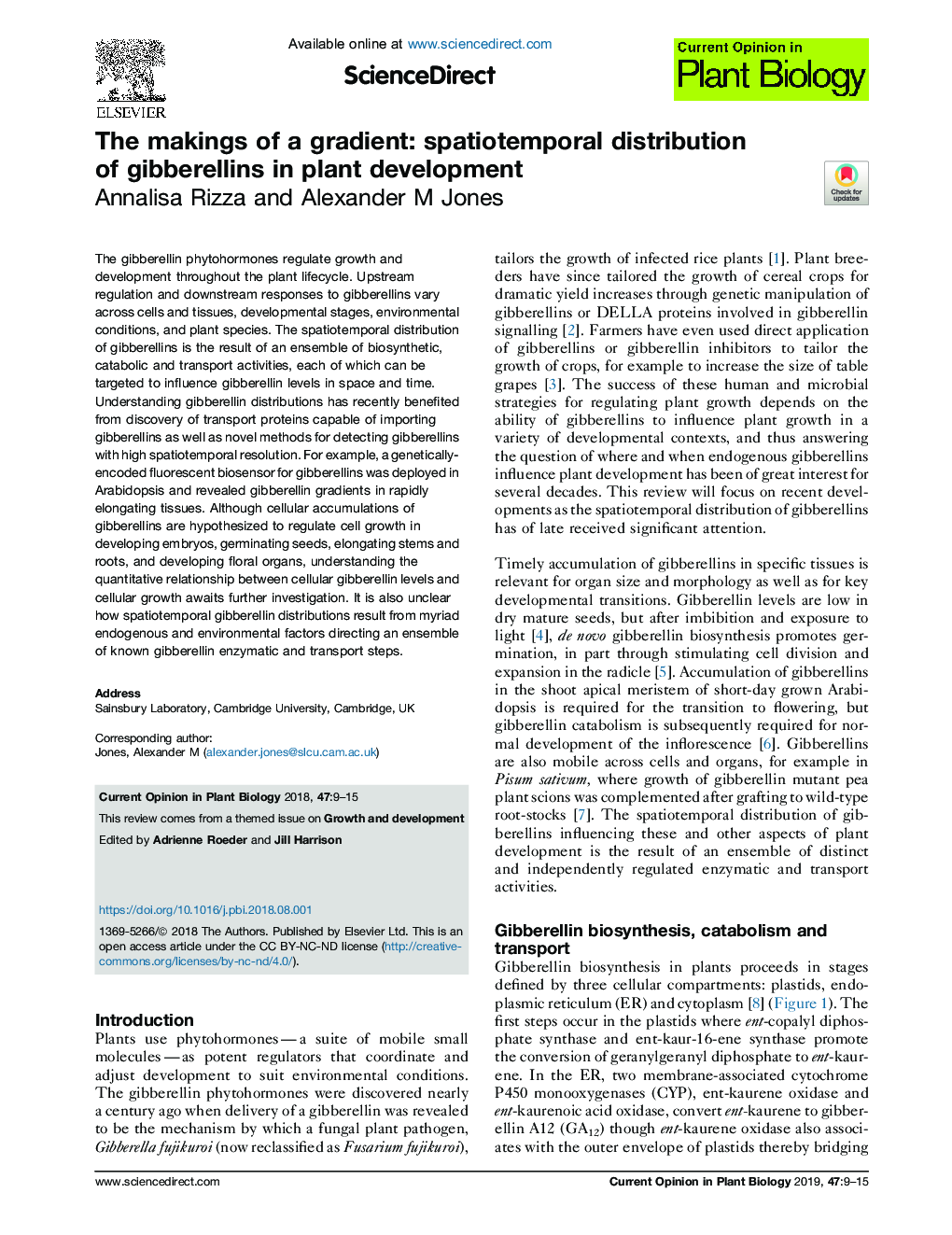| Article ID | Journal | Published Year | Pages | File Type |
|---|---|---|---|---|
| 8956102 | Current Opinion in Plant Biology | 2019 | 7 Pages |
Abstract
The gibberellin phytohormones regulate growth and development throughout the plant lifecycle. Upstream regulation and downstream responses to gibberellins vary across cells and tissues, developmental stages, environmental conditions, and plant species. The spatiotemporal distribution of gibberellins is the result of an ensemble of biosynthetic, catabolic and transport activities, each of which can be targeted to influence gibberellin levels in space and time. Understanding gibberellin distributions has recently benefited from discovery of transport proteins capable of importing gibberellins as well as novel methods for detecting gibberellins with high spatiotemporal resolution. For example, a genetically-encoded fluorescent biosensor for gibberellins was deployed in Arabidopsis and revealed gibberellin gradients in rapidly elongating tissues. Although cellular accumulations of gibberellins are hypothesized to regulate cell growth in developing embryos, germinating seeds, elongating stems and roots, and developing floral organs, understanding the quantitative relationship between cellular gibberellin levels and cellular growth awaits further investigation. It is also unclear how spatiotemporal gibberellin distributions result from myriad endogenous and environmental factors directing an ensemble of known gibberellin enzymatic and transport steps.
Related Topics
Life Sciences
Agricultural and Biological Sciences
Plant Science
Authors
Annalisa Rizza, Alexander M Jones,
